What Is Cortisol Imbalance? Symptoms You Shouldn’t Ignore
Introduction
If you’ve ever felt exhausted yet wired, struggled with sleep even when you’re tired, or found yourself gaining weight despite eating well — your cortisol may be out of balance.
Cortisol is your body’s primary stress hormone, and while it’s essential for survival, modern life pushes it into overdrive. Over time, this can disrupt everything — from your sleep and mood to your immune system and metabolism.
Many people hear “cortisol” and think it’s bad. But cortisol isn’t the enemy — imbalance is. When this powerful hormone rises or falls outside its natural rhythm, it can create a domino effect of symptoms that are often mistaken for anxiety, fatigue, or even depression.
Let’s explore what cortisol really is, how it’s meant to function, what happens when it gets out of sync, and — most importantly — what symptoms you should never ignore. 🌸
Looking for supplements for This? Click here.
💫 What Is Cortisol and Why Do We Need It?

Cortisol is produced by your adrenal glands, two small organs that sit on top of your kidneys. It’s part of a complex stress-response system called the HPA axis (hypothalamic-pituitary-adrenal axis), which manages how your body reacts to physical, emotional, or environmental stress.
In a healthy body, cortisol helps regulate:
Blood sugar and energy levels
Blood pressure and cardiovascular function
Immune and inflammatory responses
Sleep–wake cycles
Focus, alertness, and emotional balance
In short, cortisol keeps you alive, alert, and adaptable. When you wake up in the morning, cortisol rises to help you get out of bed. As the day goes on, it gradually declines, reaching its lowest point at night to allow deep sleep.
This daily rhythm is called the diurnal cortisol curve — and when it’s balanced, you feel calm yet energized, focused yet relaxed.
The problem arises when that rhythm flattens or reverses — meaning cortisol is too high when it should be low, or too low when you need it most. That’s when symptoms begin to appear.
⚡ The Two Faces of Cortisol: Too Much vs Too Little
Cortisol imbalance doesn’t look the same for everyone. Some people experience chronically high cortisol, while others develop low cortisol after long-term stress. Both extremes can wreak havoc.
When stress is constant — deadlines, emotional strain, poor sleep, caffeine overload — your adrenals keep pumping cortisol to help you cope. At first, this feels like “supercharged energy.” You push through fatigue, stay productive, and maybe even feel sharp under pressure.
But over time, your system burns out. The adrenals can’t keep up, and cortisol levels drop too low — a condition often referred to as adrenal fatigue or HPA axis dysfunction.
Both stages have distinct symptoms, and recognizing them early can prevent long-term damage.
🌋 When Cortisol Is Too High
High cortisol, also called hypercortisolism, often shows up as chronic stress — both mental and physical.
Your body stays in “fight or flight” mode even when there’s no real threat. This constant activation leads to inflammation, blood sugar swings, and disrupted hormones.
You might feel restless but exhausted, unable to relax yet constantly tired. Sleep becomes lighter, mood becomes reactive, and food cravings intensify.
Some classic signs of elevated cortisol include:
Feeling wired at night, with racing thoughts or insomnia
Fat storage around the abdomen or face (“stress belly”)
Frequent anxiety, irritability, or a short fuse
High blood pressure or heart palpitations
Cravings for sugar, caffeine, or salty foods
Muscle weakness or slower recovery after workouts
Skin issues like breakouts or thinning
Irregular or missing menstrual cycles (in premenopausal women)
Lowered immunity or frequent colds
Over time, chronically high cortisol can lead to insulin resistance, fatigue, thyroid disruption, and even accelerated aging. It literally speeds up the body’s wear-and-tear process.
🌑 When Cortisol Is Too Low
After months or years of stress, the adrenals can become “blunted” — meaning they can’t produce enough cortisol to meet daily needs. This is the other side of imbalance: hypocortisolism.
You may feel chronically drained, foggy, or unmotivated. Even simple tasks feel like climbing a hill. You might crave coffee or naps but still feel unrefreshed.
Common signs of low cortisol include:
Morning fatigue that lasts for hours
Dizziness when standing up quickly
Low blood pressure or fainting spells
Sugar or salt cravings
Weak immune system and slow healing
Feeling cold or having low body temperature
Mood swings, apathy, or “flat” emotions
Increased sensitivity to stress — small problems feel overwhelming
Low cortisol can resemble depression or burnout, but the underlying mechanism is biochemical: your body simply isn’t producing enough of this vital hormone to sustain normal function.
In severe cases, this pattern can progress to adrenal insufficiency, a more serious medical condition that requires professional treatment.
🌗 Cortisol and the HPA Axis: The Stress Control Center
The HPA axis acts like your body’s internal thermostat for stress. It starts in the brain, where the hypothalamus detects signals of danger — emotional or physical — and tells the pituitary gland to stimulate the adrenals.
The adrenals then release cortisol, which mobilizes energy, increases alertness, and prepares you to act. Once the stressor passes, cortisol levels drop, signaling the brain to relax.
But when the stress never stops — work, relationships, illness, even excessive exercise — this communication loop breaks down. The hypothalamus stops responding properly, and cortisol production becomes erratic.
That’s why cortisol imbalance isn’t just about the adrenals — it’s about the entire feedback loop between your brain and body.
When this system becomes dysregulated, every organ feels it — from your thyroid to your gut to your immune system.
🧠 The Mind–Body Connection: Cortisol and Mood
Cortisol isn’t just a stress hormone — it’s also a mood regulator. It interacts directly with serotonin, dopamine, and GABA, the neurotransmitters responsible for emotional stability and focus.
When cortisol is too high, it amplifies anxiety and hypervigilance. You feel “on edge” or easily startled.
When cortisol is too low, the brain struggles to maintain energy and emotional engagement. Everything feels dull or heavy — not necessarily sadness, but emotional flatness.
This is why cortisol imbalance is often misdiagnosed as anxiety disorder or depression. It mimics both, but the root cause lies deeper — in your body’s stress-response rhythm.
Cortisol also influences memory and cognition. Chronic elevation can damage the hippocampus — the brain’s learning and memory center — while low cortisol impairs focus and mental clarity.
That’s why restoring balance often leads to mental calmness, clearer thinking, and even improved creativity. 🌤️
💖 Cortisol and Hormones: The Hidden Link
Cortisol doesn’t act alone — it competes and collaborates with other hormones. When it’s chronically elevated, it suppresses reproductive hormones like estrogen, progesterone, and testosterone.
This is especially significant during menopause or perimenopause, when hormone levels are already shifting. Excess cortisol can intensify hot flashes, insomnia, and weight gain.
High cortisol also blunts thyroid function by lowering conversion of T4 to T3 (the active thyroid hormone). That’s why women under chronic stress often experience symptoms like cold hands, fatigue, and unexplained weight gain — even when their thyroid tests look “normal.”
In short, cortisol imbalance throws your entire hormonal orchestra out of tune. The longer it lasts, the harder it is for the body to return to equilibrium — unless you address both the cause and the consequence.
🌡️ How Cortisol Affects Metabolism and Weight
If you’ve been eating clean but can’t lose belly fat, cortisol might be the missing piece.
Cortisol signals the body to store fat — especially around the midsection — as a survival mechanism. It’s your body’s way of preparing for “danger.”
It also raises blood sugar levels, which leads to insulin spikes and increased hunger. Over time, this creates a cycle of sugar cravings, emotional eating, and energy crashes.
At the same time, high cortisol breaks down muscle tissue (catabolism) to release amino acids for energy. This slows metabolism even further, making weight loss frustratingly difficult.
The good news: once cortisol is balanced, metabolism often resets naturally. Appetite stabilizes, cravings decrease, and energy returns.
🌙 Sleep, Cortisol, and the Nighttime Problem
Cortisol and melatonin — your sleep hormone — follow opposite rhythms. When cortisol is high, melatonin stays low, and vice versa.
If cortisol stays elevated at night, it becomes almost impossible to fall asleep or stay asleep. You might wake up at 2 or 3 a.m., heart racing, with your mind spinning.
This pattern — known as “reversed cortisol rhythm” — is one of the most common modern imbalances. It’s often fueled by late-night screen exposure, emotional stress, caffeine, or skipped meals.
Fixing this rhythm requires resetting your internal clock — through morning sunlight, consistent meals, calming rituals before bed, and sometimes targeted supplements like magnesium, ashwagandha, or phosphatidylserine.
When your cortisol drops at night and rises in the morning again, you rediscover deep sleep, calmer mornings, and better mental focus throughout the day.
☀️ Lifestyle Factors That Disrupt Cortisol Balance
Cortisol is responsive — it reacts to your daily choices. Some habits constantly push it out of alignment.
Poor sleep, skipping breakfast, excessive caffeine, overtraining, and emotional suppression all elevate cortisol.
Even chronic mental multitasking — constantly checking messages, rushing, or worrying — triggers microbursts of stress hormones throughout the day.
Ironically, too little stimulation can also cause imbalance. When your body has been in survival mode for years, withdrawing completely can lead to cortisol “crash” and fatigue. The key is finding rhythmic balance — gentle stimulation during the day and deep recovery at night.
Your body thrives on predictability — waking, eating, and resting at regular intervals keeps your HPA axis calm and resilient.
🧘 Healing Cortisol Imbalance: The Holistic Approach
Cortisol imbalance can’t be fixed with willpower alone. You have to address both the physiology and the psychology of stress.
The most effective approach includes:
Regulating sleep and circadian rhythm
Nourishing your body with stable blood sugar
Restoring minerals and nutrients
Calming the nervous system through breathwork and therapy
Moving gently rather than overexercising
Nutrition and Cortisol Balance
Balanced meals are cortisol’s best friend. Skipping meals or relying on caffeine spikes cortisol levels dramatically. Eating within an hour of waking stabilizes blood sugar and sets the tone for the day.
Protein, healthy fats, and slow carbohydrates at each meal prevent crashes that trigger cortisol surges.
Magnesium, vitamin C, and B vitamins are especially critical because they are consumed rapidly during stress. Adding leafy greens, nuts, citrus, and adaptogenic teas like tulsi or licorice root can help restore calm.
Breathwork and Mind–Body Practices
Deep breathing literally resets your vagus nerve — the communication line between brain and body. Techniques like 4-7-8 breathing or gentle breath-holds lower cortisol within minutes.
Yoga, qigong, and slow walks also activate parasympathetic (rest and digest) mode, helping your body trust that it’s safe again.
Therapy and Emotional Regulation
If your stress response has been hyperactive for years, it’s often tied to emotional memory — past trauma, chronic worry, or perfectionism.
Cognitive-behavioral therapy (CBT), somatic therapy, and EMDR help rewire your brain’s relationship to stress. Over time, you stop reacting automatically and start responding consciously.
The result isn’t the absence of stress — it’s a flexible nervous system that recovers faster. 🌸
Looking for online therapy ? Click Here.
💊 Supplement Support for Cortisol Balance
Certain nutrients and herbs support adrenal recovery and cortisol regulation naturally.
Magnesium glycinate promotes relaxation and deep sleep.
Vitamin C supports adrenal resilience and immune function.
B vitamins help the body metabolize stress hormones.
Adaptogens like ashwagandha, rhodiola, and holy basil help your body adapt to both physical and emotional stress.
Phosphatidylserine helps lower nighttime cortisol and improve sleep quality.
These aren’t quick fixes but long-term allies. Over weeks or months, they retrain your stress response, restoring calm energy rather than jittery alertness.
🌺 The Long-Term Risks of Ignoring Cortisol Imbalance
Unchecked cortisol imbalance is more than a nuisance — it can erode your long-term health.
Chronically high cortisol increases the risk of heart disease, insulin resistance, thyroid dysfunction, and osteoporosis. It also accelerates aging by shortening telomeres, the protective caps on your DNA.
Low cortisol, on the other hand, weakens immunity, disrupts blood sugar stability, and increases vulnerability to infection and burnout.
These aren’t abstract risks — they’re the everyday conditions that determine how vibrant, focused, and emotionally steady you feel over time.
🌷 Signs Your Cortisol May Be Out of Balance
You might not need lab tests to suspect cortisol imbalance — your body speaks loudly through symptoms.
If you often wake up tired, crave caffeine, struggle with anxiety or sleep, notice unexplained weight gain, or feel emotionally “flat,” your cortisol rhythm may be disrupted.
Other subtle signs include frequent colds, digestive issues, thinning skin, or feeling more sensitive to light and sound.
These signals are not your body betraying you — they’re your body asking for regulation.
🌞 Restoring Rhythm: The Cortisol Reset Lifestyle
Healing cortisol imbalance is ultimately about restoring rhythm — between activity and rest, stimulation and recovery, doing and being.
Start with small rituals that tell your body, “You’re safe now.”
Wake up with sunlight and a nourishing breakfast. Move your body gently during the day. Limit caffeine after noon. Disconnect from screens an hour before bed.
Create calm moments throughout your day — not just at night. Every time you pause to breathe, stretch, or check in with yourself, you’re teaching your nervous system to shift from survival to stability.
Cortisol loves routine. The more consistent your habits, the smoother your hormonal rhythm becomes.
💫 The Deeper Meaning of Balance
Cortisol imbalance isn’t just a physical issue — it’s also an emotional metaphor. It reflects a life lived too fast, too pressured, or too disconnected from rest.
When you restore balance, you’re not just healing a hormone — you’re healing your relationship with stress itself.
You learn that strength isn’t about pushing through, but about pacing yourself. Resilience isn’t built by enduring chaos, but by creating space for recovery.
In that sense, balancing cortisol is a profound act of self-care — one that rewires your biology and redefines your sense of peace.
🌿 Final Thoughts
Cortisol imbalance is one of the most overlooked modern health challenges. It’s the silent thread connecting anxiety, fatigue, weight changes, and hormonal disruption.
But it’s also reversible. Your body is constantly seeking balance — you simply have to give it the conditions to do so.
When you regulate your rhythms, feed your body well, breathe deeply, and rest intentionally, your cortisol naturally finds its way back to harmony.
That’s when you rediscover energy without anxiety, focus without force, and calm without collapse. 🌙✨
📚 References
Sapolsky RM. (2004). Why Zebras Don’t Get Ulcers: The Acclaimed Guide to Stress, Stress-Related Diseases, and Coping. Henry Holt & Co.
Gunnar MR, Quevedo KM. (2007). “The Neurobiology of Stress and Development.” Annual Review of Psychology, 58: 145–173.
Heim C. et al. (2000). “The Hypothalamic–Pituitary–Adrenal Axis in Anxiety Disorders.” Endocrine Reviews, 21(2): 155–180.
McEwen BS. (2008). “Central Effects of Stress Hormones in Health and Disease.” European Journal of Pharmacology, 583(2-3): 174–185.
Kudielka BM, Kirschbaum C. (2005). “Sex Differences in HPA Axis Responses to Stress.” Biological Psychology, 69(1): 113–132.
Fardet L. et al. (2012). “Chronic Cortisol Exposure and Cardiometabolic Health.” Journal of Clinical Endocrinology & Metabolism, 97(5): 155–162.
Chrousos GP. (2009). “Stress and Disorders of the Stress System.” Nature Reviews Endocrinology, 5(7): 374–381.
Russell G. et al. (2018). “The Hypothalamic–Pituitary–Adrenal Axis and Chronic Fatigue.” Psychoneuroendocrinology, 87: 1–12.
Panossian A., Wikman G. (2010). “Adaptogens in the Prevention of Stress-Induced Disorders.” Phytotherapy Research, 24(10): 1551–1562.
Tsigos C., Chrousos GP. (2002). “Hypothalamic–Pituitary–Adrenal Axis, Neuroendocrine Factors and Stress.” Journal of Psychosomatic Research, 53(4): 865–871.
Related Posts
-
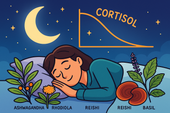
Adaptogen Stacks for Better Sleep and Lower Stress Hormones
Adaptogens can help your body recover from stress and sleep better by regulating key hormones like cortisol and adrenaline. 🌿 Learn how adaptogen stacks work to restore balance, calm the mind, and rebuild resilience — so you can rest deeply and wake renewed. ✨
-
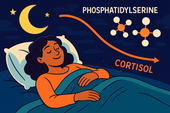
Phosphatidylserine for Nighttime Cortisol Control
When stress hormones stay high at night, deep rest becomes impossible. 🌙 Discover how phosphatidylserine helps calm the brain, reduce nighttime cortisol, and restore healthy sleep rhythms — so you can wake up peaceful, clear, and recharged. ✨
-
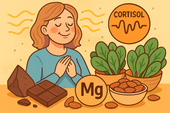
Magnesium for Stress Relief and Cortisol Reduction
Magnesium is one of the most powerful natural tools for stress relief. 🌿 This essential mineral calms your nervous system, lowers cortisol, and helps your body recover from chronic tension. Learn how magnesium replenishes balance, improves sleep, and restores inner peace — naturally. ✨
-
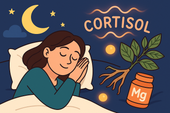
Supplements to Improve Sleep by Balancing Cortisol
When cortisol stays high at night, sleep becomes a struggle. 🌙 Discover natural supplements that calm the nervous system, lower stress hormones, and restore your body’s natural rhythm. From magnesium and ashwagandha to L-theanine and phosphatidylserine, learn how to build deeper, more restorative rest. 🌿
-
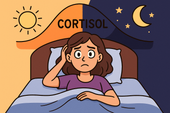
Cortisol and Sleep: Why Stress Keeps You Awake
When stress keeps your body in fight-or-flight mode, cortisol refuses to calm down — and sleep becomes impossible. 🌙 Learn how elevated cortisol disrupts your circadian rhythm, suppresses melatonin, and turns restless nights into exhaustion. Discover how to restore balance and reclaim deep rest. ✨
-
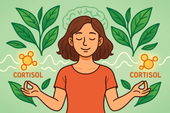
L-Theanine for Cortisol Balance and Anxiety Relief
L-Theanine — the calming amino acid from green tea — helps quiet the mind and balance cortisol, the body’s key stress hormone. 🌿 Learn how it promotes calm focus, eases anxiety, and supports deep rest without sedation, backed by modern research and centuries of tradition. ✨
-

Rhodiola Rosea and Stress Resilience: A Natural Cortisol Regulator
Rhodiola rosea is one of nature’s most powerful tools for resilience. 🌿 This Arctic root helps balance cortisol, fight fatigue, and sharpen focus — keeping you calm yet energized even under stress. Discover the science behind Rhodiola’s adaptogenic power and how it helps your body thrive under pressure. ✨
-
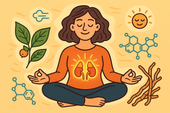
Ashwagandha for Cortisol Balance: What the Science Says
Ashwagandha helps your body recover from chronic stress by calming the adrenal system and balancing cortisol — your key stress hormone. 🌿 Learn what science says about this powerful adaptogen, how it restores energy and focus, and why it’s one of nature’s most effective tools for modern stress relief. ✨
-

Supplements That Naturally Lower Cortisol Levels
When cortisol levels calm, your energy transforms — no more crashes or jitters, just steady focus and inner peace. 🌿 Learn which natural supplements and habits lower stress hormones, boost calm energy, and help your body thrive with balance instead of burnout. ✨
-
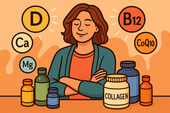
The Best Daily Multivitamins for Menopausal Women
Menopause brings new nutritional needs that your old vitamin routine may no longer meet. 🌿 Discover how the right daily multivitamin can boost energy, balance mood, support bone and heart health, and keep your skin glowing. Learn which nutrients truly matter — from vitamin D to magnesium and B12 — to feel strong and vibrant every day. ✨
-

Antioxidants and Menopause: Fighting Inflammation Naturally
During menopause, oxidative stress and inflammation can quietly accelerate aging, fatigue, and skin changes. 🌿 Learn how antioxidants — from vitamins C and E to polyphenols in berries and green tea — help neutralize free radicals, reduce inflammation, and restore balance naturally. Discover the science of radiant, resilient aging. ✨
-

How CoQ10 Supports Heart Health After Menopause
After menopause, heart health becomes more important than ever. ❤️ Discover how CoQ10 — your body’s natural energy molecule — supports cardiovascular strength, restores vitality, and protects against oxidative stress. Learn how this essential nutrient helps keep your heart energized, balanced, and resilient through every stage of life. 🌿
-

Collagen Supplements for Skin and Joint Health Post-Menopause
After menopause, collagen loss affects both skin elasticity and joint comfort — but supplements can help rebuild from within. 🌸 Learn how collagen peptides, vitamin C, and other nutrients work together to restore firmness, reduce stiffness, and keep you glowing and mobile well into your next chapter. ✨
-
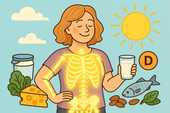
Calcium and Vitamin D: Protecting Bone Health in Menopause
Menopause brings hormonal changes that can weaken bones—but with the right nutrients, strength and stability can be rebuilt. 🦴 Learn how calcium and vitamin D work together to protect bone density, prevent fractures, and keep your body resilient. This guide explores nutrition, sunlight, and lifestyle habits that help your bones stay strong and vibrant for years to come. ☀️💪
-

Adaptogens for Energy and Resilience During Menopause
Feeling drained or emotionally scattered during menopause? 🌿 Discover how adaptogenic herbs like Ashwagandha, Rhodiola, and Ginseng can restore energy, balance cortisol, and build emotional resilience. Learn how these natural allies work with your body—not against it—to help you stay strong, focused, and calm through life’s hormonal changes. 🌸
-

Supplements That Help Beat Menopause Fatigue
Menopause fatigue can feel like more than tiredness—it’s a total energy crash. This guide explores how specific supplements, mindful breathwork, and therapy can help restore balance. Learn how nutrients like B vitamins, magnesium, and adaptogens rebuild your stamina, while breathwork and emotional healing calm your nervous system and bring vitality back to your days. 🌿✨
-

Herbal Blends for Menopausal Restlessness: Finding Calm in Transition
Herbal blends bring the wisdom of nature into moments of rest and renewal. Discover how soothing herbs like chamomile, lemon balm, and ashwagandha work together to calm menopausal restlessness, balance hormones, and invite deep relaxation. 🌿💫
-
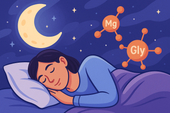
Magnesium + Glycine for Deep Sleep During Menopause
Nutrients like magnesium, glycine, and B vitamins form the foundation for deep, restorative sleep during menopause. Discover how these natural compounds calm your nervous system, balance hormones, and help you wake up refreshed and recharged. 🌿💤
-
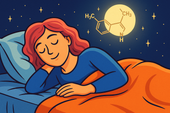
Melatonin and Menopause: Restoring Your Sleep Cycle
Nutrients are the foundation of hormone balance and energy. Learn how vitamins, minerals, and whole foods like greens, salmon, and berries nourish women’s bodies during menopause and beyond — restoring vitality, mood, and strength. 🌿🥗
-
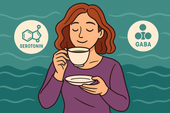
How L-Theanine Helps With Menopausal Anxiety
Science continually deepens our understanding of the human body, from hormones to neurotransmitters. Discover how evidence-based research shapes modern wellness — bridging natural medicine, neuroscience, and hormone balance for healthier living. 🔬🌿
-

Can Ginkgo Biloba Improve Memory in Menopausal Women?
Hormone therapy can be a powerful tool for easing menopause symptoms and restoring balance. Learn how it works, the types available, and how to combine it safely with lifestyle and natural support for optimal well-being. 🌸💊
-

B Vitamins for Mental Clarity During Menopause
Nutrients are the foundation of mental and physical balance during menopause. Discover how vitamins, minerals, and whole foods like leafy greens, fish, nuts, and citrus can fuel energy, clarity, and calm while supporting hormonal health. 🌿✨
-

Mood Swings and Menopause: Natural Nutrient Support
Probiotics do more than support digestion — they help balance mood, hormones, and immunity too. Learn how a healthy gut microbiome can ease menopause symptoms, boost energy, and improve emotional resilience naturally. 🌿🦠
-

Brain Fog in Menopause: Supplements That May Help
Supplements can be powerful allies in restoring balance, energy, and focus—especially during menopause. Learn how nutrients like omega-3s, vitamin D, magnesium, and herbal adaptogens work together to support brain health, reduce stress, and promote lasting vitality. 🌿💊
-

Adaptogen Stacks for Reducing Night Sweats
Hormone detox isn’t about cleansing your body—it’s about restoring flow. Learn how the liver, gut, and endocrine systems work together to eliminate hormone buildup and how herbs like milk thistle, dandelion, and schisandra support balance, clarity, and natural vitality. 🌿💫
-
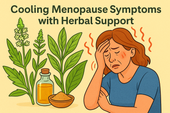
Cooling Menopause Symptoms with Herbal Support
Ashwagandha is one of nature’s most powerful adaptogens, helping women manage stress, sleep better, and balance hormones naturally. Discover how this ancient root supports calm energy, emotional resilience, and relief from menopause-related anxiety and fatigue. 🌿💫
-

Evening Primrose Oil and Menopause: What the Research Says
Hot flashes are one of the most common—and frustrating—symptoms of menopause. Discover what causes them, why the body’s “internal thermostat” becomes unbalanced, and the natural supplements and lifestyle shifts that can help you cool down, rest better, and feel more in control. 🔥💧
-

How Black Cohosh Helps with Menopausal Symptoms
Sleep disturbances are among the most exhausting symptoms of menopause—but they don’t have to rule your nights. Discover how natural strategies and calming supplements can help you fall asleep faster, stay asleep longer, and wake up feeling truly restored. 🌙💤
-
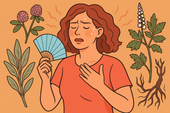
Natural Supplements That May Reduce Hot Flashes
Hot flashes can disrupt sleep, confidence, and daily comfort—but natural relief is possible. Discover the best research-backed supplements like black cohosh, red clover, and licorice root that may reduce hot flashes, balance hormones, and restore inner calm during menopause. 🌿💫
-

Omega-3s and Menopause: Supporting Mood and Inflammation
Omega-3 fatty acids are essential for hormonal harmony, brain function, and emotional balance—especially during menopause. Learn how these healthy fats reduce inflammation, support heart health, and restore calm, vitality, and focus through every stage of midlife. 🌊💫
-

The Role of Vitamin D in Menopausal Health
Vitamin D plays a powerful role in menopausal health—supporting bone strength, hormone balance, and mood stability. Discover how optimizing your vitamin D levels can improve sleep, energy, and emotional well-being while protecting long-term vitality through every stage of menopause. 🌞💪
-
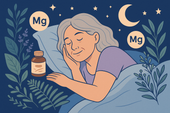
Magnesium for Menopause: Relaxation, Sleep, and Hormonal Support
Self-regulation is the art of staying calm, centered, and in control—no matter what life throws your way. Learn how to strengthen emotional balance, manage stress responses, and cultivate inner peace through mindful techniques that reconnect your heart, body, and brain. 🌿💫
-

Can Adaptogens Like Ashwagandha Ease Menopausal Symptoms?
Brain fog during menopause can make even simple tasks feel overwhelming—but you’re not losing your sharpness, your hormones are simply shifting. Discover how adaptogens like ashwagandha and key nutrients can restore mental clarity, balance cortisol, and bring calm focus back to your day. 🌿🧠
-

Supplements That Support Hormonal Balance During Menopause
Herbal supplements have supported women’s health for centuries—and modern science is finally catching up. From ashwagandha and maca to red clover and rhodiola, discover how nature’s most trusted herbs can calm stress, balance hormones, and enhance energy through every life stage. 🌿✨
-
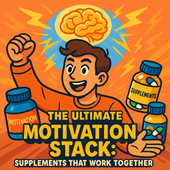
The Ultimate Motivation Stack: Supplements That Work Together
Discover how therapy helps restore motivation, focus, and emotional balance alongside supplement and mindset strategies. This empowering article explores how addressing thought patterns and emotional blocks through therapy can complement biochemical tools for long-term drive and well-being. 🧠💬
-

Entrepreneurial Drive: Can Supplements Help You Avoid Burnout?
Entrepreneurship demands energy, creativity, and mental resilience—but without balance, it leads to burnout. This in-depth article explores how nootropic supplements, adaptogens, and mindset tools can help entrepreneurs sustain motivation, manage stress, and keep their drive sharp for the long haul. 🚀💼
-

Supplements for Students: Staying Motivated Through Exams
Feeling burned out before finals? Discover how the right supplements can help students stay focused, calm, and motivated through exam season. This guide explores science-backed nutrients, brain-boosting herbs, and mindset tools that fuel clarity, memory, and stress resilience when it matters most. 🎓⚡
-
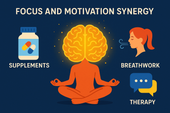
How Nootropic Stacks Can Enhance Drive and Focus Together
Discover how nootropic stacks can reignite both your drive and focus by balancing key neurotransmitters like dopamine and acetylcholine. This in-depth guide explores the science behind motivation, how supplements enhance cognitive performance, and how breathwork and therapy complete the picture for lasting mental clarity. 🧠✨
-
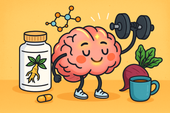
Natural Pre-Workout Supplements for Motivation and Mental Sharpness
Adaptogens are nature’s stress balancers 🌿 — powerful herbs like Ashwagandha, Rhodiola, and Holy Basil that help your body stay calm, focused, and resilient. By regulating cortisol and supporting energy balance, they boost motivation, endurance, and emotional stability — naturally. 🌞🧠
-
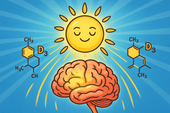
The Role of Vitamin D in Mental Drive and Ambition
Motivation is more than mindset — it’s energy in motion ⚡🧠. It comes from a balance of biology, emotion, and purpose. When your brain, body, and habits align, drive becomes effortless. Learn how to spark consistency, overcome dips, and build unstoppable momentum naturally. 🌿✨
-
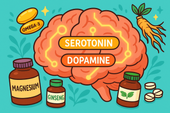
Serotonin, Dopamine, and Motivation: Can Supplements Really Help?
Ginseng is the ultimate vitality root 🌿⚡ — long praised for enhancing focus, energy, and motivation without the crash. By balancing stress hormones, boosting dopamine, and improving brain oxygenation, this adaptogenic powerhouse helps you feel clear, strong, and ready to take action. 🧠✨
-

How Ginseng Helps Support Drive, Motivation, and Energy
Ginseng is nature’s endurance root 🌿⚡ — a timeless adaptogen that fuels focus, drive, and resilience from the inside out. By balancing cortisol, boosting dopamine, and supporting mitochondrial energy, ginseng helps you feel clear, strong, and steady — no crash, just sustainable vitality. 🧠✨
-
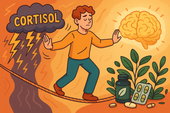
The Stress–Motivation Connection: Supplements That Balance Cortisol
Vitamin D — the “sunshine nutrient” ☀️ — plays a crucial role in mental health, motivation, and energy regulation. Low levels can lead to fatigue, low mood, and sluggish focus. Learn how sunlight, nutrition, and supplementation can restore your inner light and boost emotional balance naturally. 🌿🧠
-
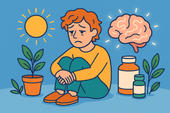
When Low Mood Drains Your Drive: Natural Support Options
Vitamin D is more than the “sunshine vitamin” ☀️ — it’s a key player in mood, motivation, and overall brain health. Low levels can lead to fatigue, low drive, and seasonal sadness. Learn how sunlight, supplements, and nutrition can help restore balance and lift your emotional energy naturally. 🌿🧠
-

How Adaptogenic Herbs Help You Stay Consistent
Adaptogens are nature’s resilience enhancers 🌿. From Ashwagandha to Rhodiola and Holy Basil, these herbs help your body adapt to stress, balance cortisol, and maintain steady energy. Learn how they build inner stability — keeping your focus, mood, and motivation consistent through life’s ups and downs. ⚡🧘
-
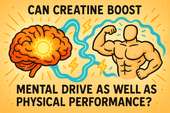
Can Creatine Boost Mental Drive as Well as Physical Performance?
IQ, or intelligence quotient, measures more than problem-solving — it reflects how efficiently your brain processes, adapts, and connects ideas 🧠⚡. While genetics play a role, lifestyle, nutrition, and brain health all influence cognitive performance. Learn how to support mental sharpness and cognitive growth naturally. 🌿✨
-
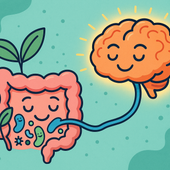
The Link Between Gut Health and Motivation: Probiotics Explained
Serotonin — the “feel-good” neurotransmitter 🌞 — plays a powerful role in mood, motivation, and overall emotional balance. Produced mostly in the gut, it connects digestion, happiness, and focus through the gut-brain axis. Learn how to naturally support serotonin for calmer energy and lasting motivation. 🌿✨
-
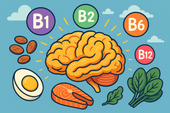
How B Vitamins Fuel Motivation and Energy at the Cellular Level
B vitamins are the body’s natural energy engines ⚡. They convert food into fuel, support dopamine for motivation, and power brain cells at the mitochondrial level. From B1 to B12, these nutrients help you stay focused, resilient, and full of drive — every single day. 🌿🧠
-
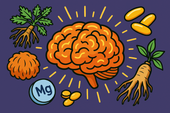
Supplements That Support Mental Endurance for Long Projects
Mindset is more than motivation — it’s the mental framework that shapes how you respond to challenges and pursue goals 🌿🧠. A growth mindset turns obstacles into opportunities, while a fixed mindset fuels self-doubt. Learn the science behind mental resilience and how to cultivate a mindset that sustains focus, creativity, and long-term success. ✨

















































